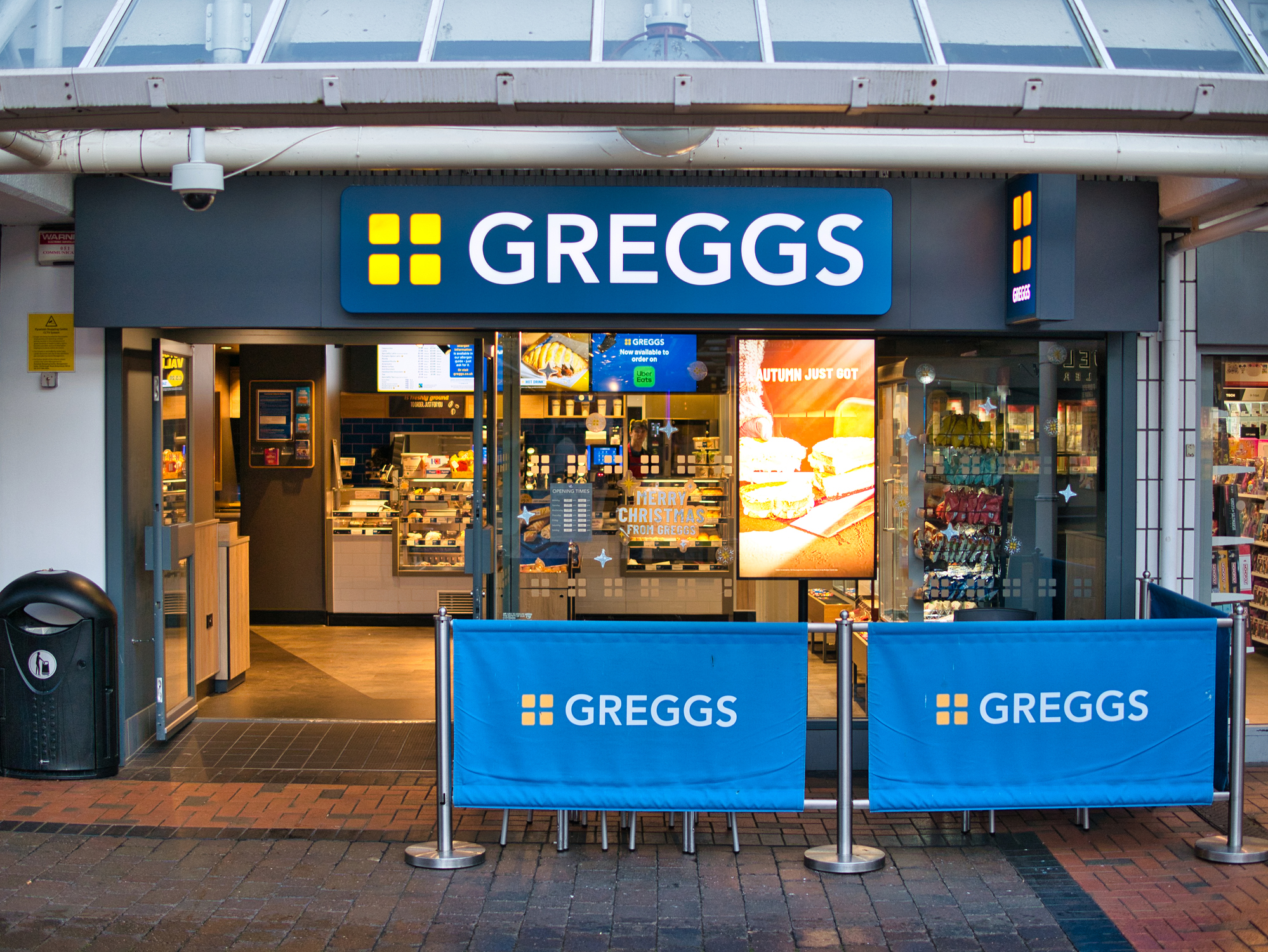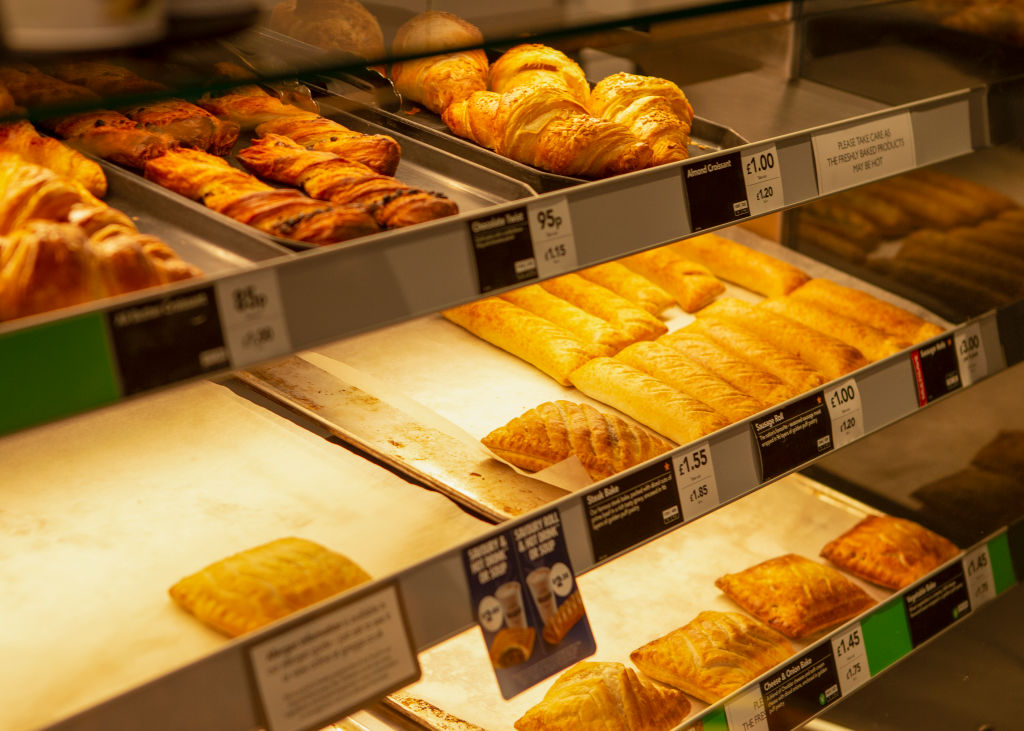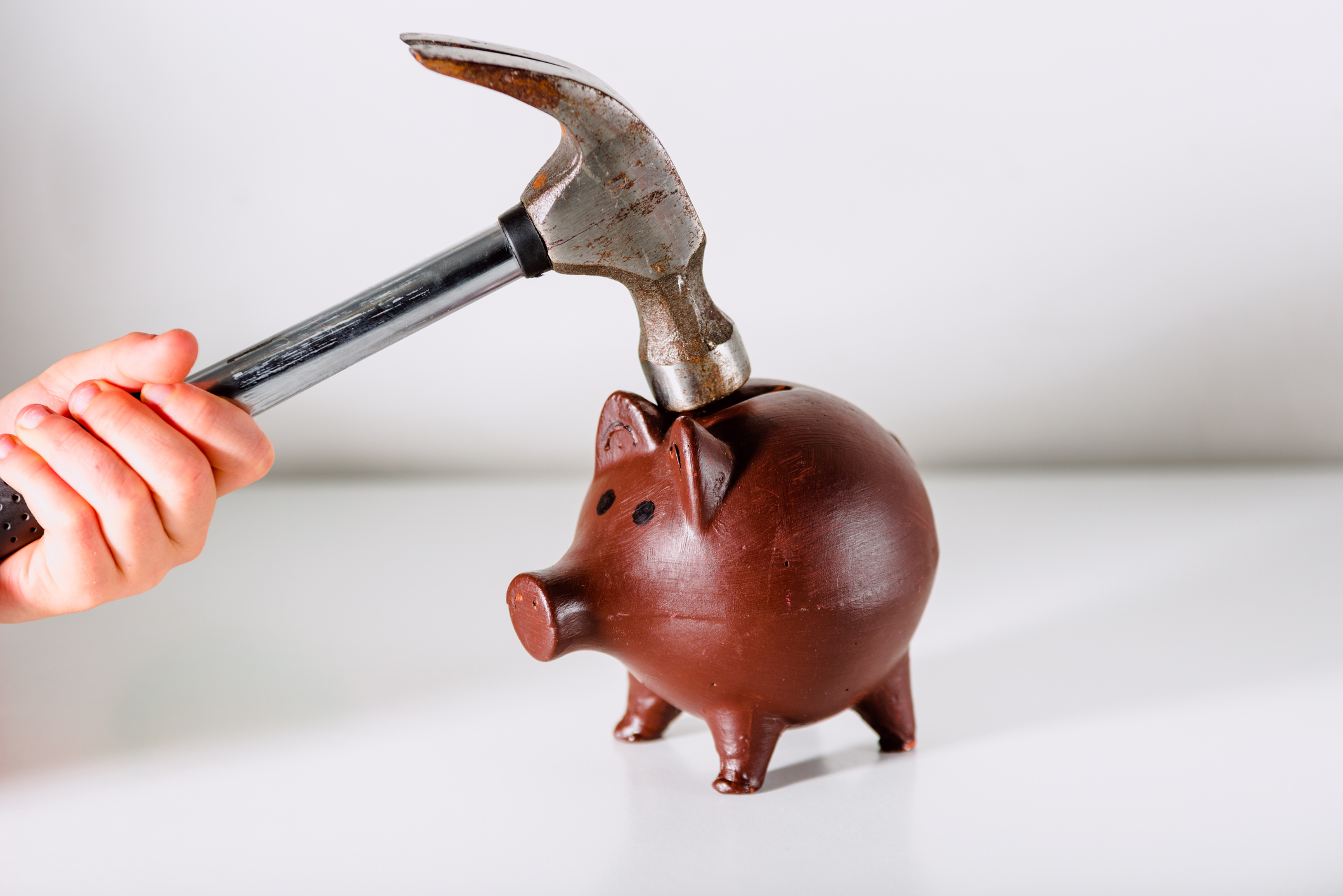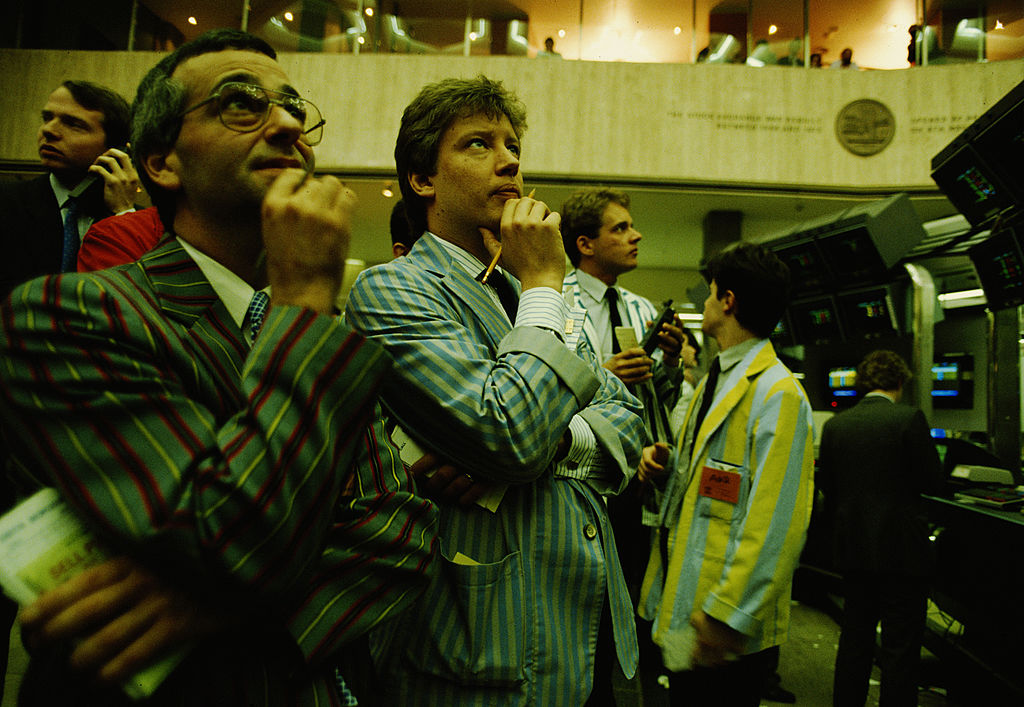Greggs’ enduring recipe for success on the high street
Greggs grew from a shop founded in Newcastle after the war into a national treasure. Profits will continue to roll in for patient investors, says Jamie Ward

Few names resonate on the British high street quite like Greggs (LSE: GRG). From its origins as a modest Newcastle bakery to its status as a national institution, Greggs has built a reputation for affordable, reliable fare that has underpinned decades of steady progress.
It stands as a rare success in a retail sector often marked by upheaval. Yet the past year has brought a sharp reversal: the share price has fallen nearly 50%, prompting questions about whether Greggs’ winning streak has faltered. The evidence suggests otherwise.
A brief history of Greggs: a retail success story
Greggs traces its origins to 1939, when John Gregg, a Tyneside entrepreneur, started delivering bread and cakes by bicycle around Newcastle. It was an unassuming venture, born in an era of austerity before World War II, but one that planted the seeds for enduring success. After the war, Gregg opened his first shop in Gosforth in 1951. This small step marked the start of a journey that would see Greggs evolve from being a local baker to becoming a household name. In 1964, John died at just 54, and his then 25-year-old son Ian assumed control, steering the business toward broader horizons.
MoneyWeek
Subscribe to MoneyWeek today and get your first six magazine issues absolutely FREE

Sign up to Money Morning
Don't miss the latest investment and personal finances news, market analysis, plus money-saving tips with our free twice-daily newsletter
Don't miss the latest investment and personal finances news, market analysis, plus money-saving tips with our free twice-daily newsletter
The pivotal moment came in 1984 when Greggs listed on the London Stock Exchange, which provided the capital to fuel expansion. This wasn’t a leap into the unknown but a calculated move rooted in its practical ethos. What ensued was a textbook case of disciplined growth. While other retailers chased fleeting trends or overstretched their resources, Greggs focused on its core offering: affordable baked goods, delivered swiftly, in locations where footfall was assured.
By the 1990s, it had become a high-street staple across the UK, with the sausage roll emerging as its signature product – simple, satisfying, and budget-friendly. Its rise mirrored Britain’s changing retail landscape, thriving amid the decline of traditional grocers and the rise of convenience culture.
Today, Greggs operates more than 2,500 outlets, outnumbering competitors such as Pret A Manger and even McDonald’s in the UK. It has transcended its roots to become a cultural fixture, serving everyone from workers seeking a quick bite to students in need of comfort food. This reliability has been central to its achievements, reflecting a deep understanding of its customers’ needs. Greggs has tapped into the British psyche, offering not just food but a sense of familiarity and value that resonates across generations and regions.
For investors, consistency is a prized attribute, and Greggs has delivered it in spades. Over the past two decades, revenue has grown steadily, rising from £457 million in 2003 to more than £2 billion in 2024 – a compound annual growth rate of approximately 7%. This is not the stuff of dramatic headlines, but it reflects a robust foundation. This stability has weathered economic storms, from the 2008 financial crisis to more recent inflationary challenges. Operating profits have kept pace, with margins typically ranging between 7% and 10%, a respectable figure for a food retailer navigating supermarket competition and cost pressures.
The dividend history reinforces this stability. Greggs has maintained payouts since the early 2000s, with only a brief interruption during the Covid pandemic when high-street traffic vanished. It swiftly recovered, resuming dividends in 2021 and supplementing them with special payments when cash reserves allowed, including payouts of 40p per share in both 2021 and 2023. For income-focused investors, Greggs has been a dependable performer, often yielding above 3% and currently over 3.5%, supported by a business model that avoids reckless ventures. This prudence has kept it afloat where flashier rivals have floundered.
Greggs has a straightforward, but effective strategy
Greggs has thrived by sticking to its strengths: good-value products tailored to its audience. While competitors experimented with premium offerings, Greggs stuck to its guns. The result? Total shareholder returns over the last 20 years of more than 1,000%. Greggs’ expansion has been deliberate rather than dazzling. It rests on three key elements: increasing its store network, refining operations and adapting to shifting tastes. The outlet count has grown incrementally – 260 when listing on the stock market in 1984, 1,000 in 1999, 1,500 by 2010, 2,000 by 2019 – and each new site has been strategically placed in high-traffic areas such as stations, retail parks and town centres. The strategy is straightforward but effective.
Operationally, Greggs has bolstered its infrastructure. Centralised bakeries and efficient logistics enable it to produce millions of items weekly with precision, a feat honed over decades. In 2023, a new frozen logistics hub in Derby, along with other major investments, enhanced capacity to support an additional 500 stores, signalling a commitment to future growth. This is part of a long-term plan to ensure supply matches demand as the chain grows.
Product evolution has been subtle but effective. The 2019 launch of the vegan sausage roll tapped into the rising demand for plant-based options without alienating its traditional base, driving a surge in sales. The addition of pizza broadened its appeal. Coffee, too, has become a strength, being affordable and competitive with chains such as Costa. These adjustments have sustained growth, with like-for-like sales rising 13.7% in 2023 despite economic headwinds and 5.5% in 2024, proving Greggs can adapt without losing its identity.
Success on this scale requires capable leadership, and Greggs’ management has proved its mettle. Roger Whiteside, CEO from 2013 to 2022, was an important and successful steward of the company, accelerating store openings and championing innovations such as the vegan range while maintaining cost discipline. His successor, Roisin Currie, took over in 2022, having joined the business in 2010 as chief people officer following a 20-year career at Asda. The leadership team’s pragmatic approach is evident in the financials. Return on capital employed (ROCE) has averaged 15%-20% over the past decade, reflecting efficient use of resources. Debt is negligible – net cash was £125 million at the end of 2024 – and cash flow comfortably covers dividends and capital expenditure. This is a management focused on execution, not fanfare.

So why are the shares languishing?
Given this strong record, the near-50% drop in Greggs’ share price over the past year – from nearly 3,200p in March 2024 to a little over half that – demands scrutiny. The decline stems not from internal failings but from a confluence of external pressures and market sentiment. The cost-of-living crisis has intensified, with inflation peaking at 11.1% in late 2022 and lingering at 3%-4% into 2025. For Greggs’ core demographic of working-class consumers, stagnant wages have curbed spending, denting footfall. Like-for-like sales growth slowed to 5% in the first half of 2024, down from double-digit gains in 2023, unsettling investors accustomed to stronger momentum.
Rising costs have compounded the issue. Wheat, energy and labour prices have climbed steeply. Greggs has raised prices modestly but hesitates to push further. Margins slipped in recent years, and although there are signs of improvements, concerns about cost impacts, particularly on wages, persist. Broader market dynamics have also played a role. With interest rates holding at 4.5% and anxiety about recession persisting, consumer stocks have fallen out of favour. The FTSE 250 has declined 10% over the past year, but Greggs’ drop has been steeper, exacerbated by a premium valuation – more than 25 times earnings at its peak, compared with a historical range of 15-20.
Management remains composed. Currie has acknowledged the difficulties, but Greggs continues to press ahead with expansion, achieving a net increase of 145 stores in 2024 – bringing the total to 2,554 – and targeting around 100 net additional openings in 2025. Digital channels have also seen strong growth, with app-based sales rising by 20%. The evening trade, particularly pizza offerings, has emerged as the most significant contributor to recent rises in sales, now accounting for a notable portion of revenue.
Operational excellence remains a priority, too, with ongoing investments in cost-saving initiatives designed to offset inflationary pressures. These efforts include enhancements to supply-chain efficiency and automation. Yet this focus on long-term stability has unsettled a market often fixated on short-term gains. Investments in new stores and efficiency measures are expected to exert modest pressure on margins and reduce return on capital in the near term. Despite this, Greggs’ consistent delivery of its strategic objectives over the years suggests that the current weakness in the share price may not fully reflect the underlying strength and health of the business.
Why patient investors should buy now
Over the years, Greggs has repeatedly demonstrated an ability to find new growth opportunities. This has delivered value to shareholders, with management’s disciplined capital allocation driving consistently high returns on investment. Greggs’ core fundamentals also remain robust. Sales continue to rise, profits have proved resilient, and the balance sheet is in good shape, supported by a healthy net cash position. Recent share price weakness appears to reflect short-term challenges rather than any structural issues with the business model. At current levels, the stock looks cheap, trading on a valuation multiple below both its decade-long average and much of its peer group. The 3.6% yield, backed by strong cash reserves, adds to the appeal.
Looking ahead, economic conditions should ease. Inflation is easing and, while interest rates may remain elevated in the near term, they are expected to soften by late 2025. Greggs’ value-focused offering tends to resonate particularly well in lean times, making it well positioned to benefit from any lingering caution among consumers. Meanwhile, ongoing store expansion, alongside growing digital and delivery channels, should continue to fuel growth. If the economic backdrop improves, profitability could also receive a boost as cost pressures ease. Risks persist, of course. A deeper-than-expected downturn or renewed spike in input costs could hinder the recovery. But Greggs has weathered challenging periods before, including the global financial crisis of 2008 and, more recently, Covid lockdowns in 2020. On each occasion, the company emerged stronger, having demonstrated both operational resilience and an ability to adapt.
For patient investors, the current share-price pullback offers an appealing entry point into a proven performer. With a runway for further growth, robust fundamentals and an attractive valuation, Greggs’ high street success story is far from over. Its ability to balance tradition with innovation, coupled with a relentless focus on value, ensures it remains a formidable presence – one that could reward those willing to look beyond the present gloom.
This article was first published in MoneyWeek's magazine. Enjoy exclusive early access to news, opinion and analysis from our team of financial experts with a MoneyWeek subscription.
Get the latest financial news, insights and expert analysis from our award-winning MoneyWeek team, to help you understand what really matters when it comes to your finances.
Jamie is an analyst and former fund manager. He writes about companies for MoneyWeek and consults on investments to professional investors.
-
 Will HMRC block money market funds from the stocks and shares ISA allowance?
Will HMRC block money market funds from the stocks and shares ISA allowance?Cautious investors looking for cash-like returns could be prohibited from using money market funds in a stocks and shares ISA under new ISA rules from HMRC. What could it mean for you?
-
 Nationwide: House price growth slows but market remained resilient despite Budget worries
Nationwide: House price growth slows but market remained resilient despite Budget worriesThe average price of a house in the UK was £272,998 in November, as annual house price growth slowed to just 1.8%, Nationwide said.
-
 Big Short investor Michael Burry closes hedge fund Scion Capital
Big Short investor Michael Burry closes hedge fund Scion CapitalProfile Michael Burry rightly bet against the US mortgage market before the 2008 crisis. Now he is worried about the AI boom
-
 The global defence boom has moved beyond Europe – here’s how to profit
The global defence boom has moved beyond Europe – here’s how to profitOpinion Tom Bailey, head of research for the Future of Defence Indo-Pac ex-China UCITS ETF, picks three defence stocks where he'd put his money
-
 Profit from a return to the office with Workspace
Profit from a return to the office with WorkspaceWorkspace is an unloved play on the real estate investment trust sector as demand for flexible office space rises
-
 New frontiers: the future of cybersecurity and how to invest
New frontiers: the future of cybersecurity and how to investMatthew Partridge reviews the key trends in the cybersecurity sector and how to profit
-
 An “existential crisis” for investment trusts? We’ve heard it all before in the 70s
An “existential crisis” for investment trusts? We’ve heard it all before in the 70sOpinion Those fearing for the future of investment trusts should remember what happened 50 years ago, says Max King
-
 8 of the best properties for sale with wildlife ponds
8 of the best properties for sale with wildlife pondsThe best properties for sale with wildlife ponds – from a 16th-century house in the Ashdown Forest, to a property on Pembrokeshire’s Preseli Hills
-
 Why a copper crunch is looming
Why a copper crunch is loomingMiners are not investing in new copper supply despite rising demand from electrification of the economy, says Cris Sholto Heaton
-
 Where to look for Christmas gifts for collectors
Where to look for Christmas gifts for collectors“Buy now” marketplaces are rich hunting grounds when it comes to buying Christmas gifts for collectors, says Chris Carter